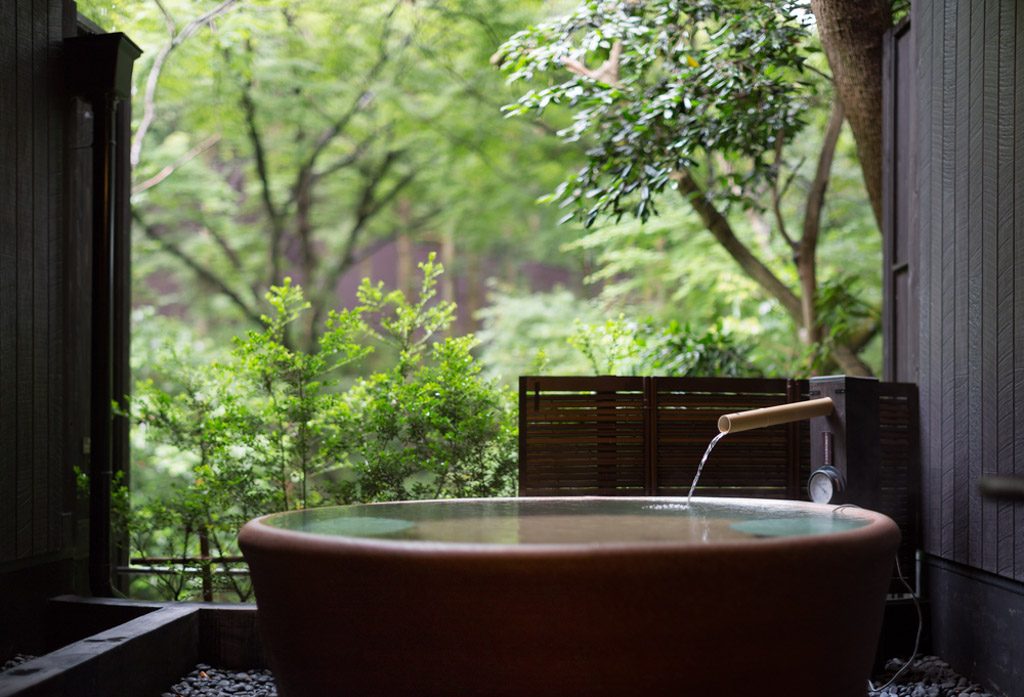When you’re researching Thermal Spas, you’ll notice that many destinations provide the temperature of the waters. Water temperature is a central feature of the sensual experience.
Our bodies react with much greater sensitivity to water temperature than they do to air temperature. A 32° day and a 38° day may feel similar. But with water, 32° is tepid – even slightly refreshing – and 38° is notably warm, like a bath.
Moreover, the sensation of water temperatures and air temperatures differ greatly. A 28° C day feels balmy and sweet, but 28° C water is cool enough that you have to keep moving to stand it for very long.
Before I continue, let me say clearly: we are not doctors. We are spa enthusiasts, who sometimes stay in waters longer than the recommended time, frequently drink wine at lunch, and generally enjoy ourselves as much as possible within reason. These observations about water temperature are not intended as health advice, but as a way to help ensure your spa experience is everything you want it to be.
Water Temperature Affects us Keenly
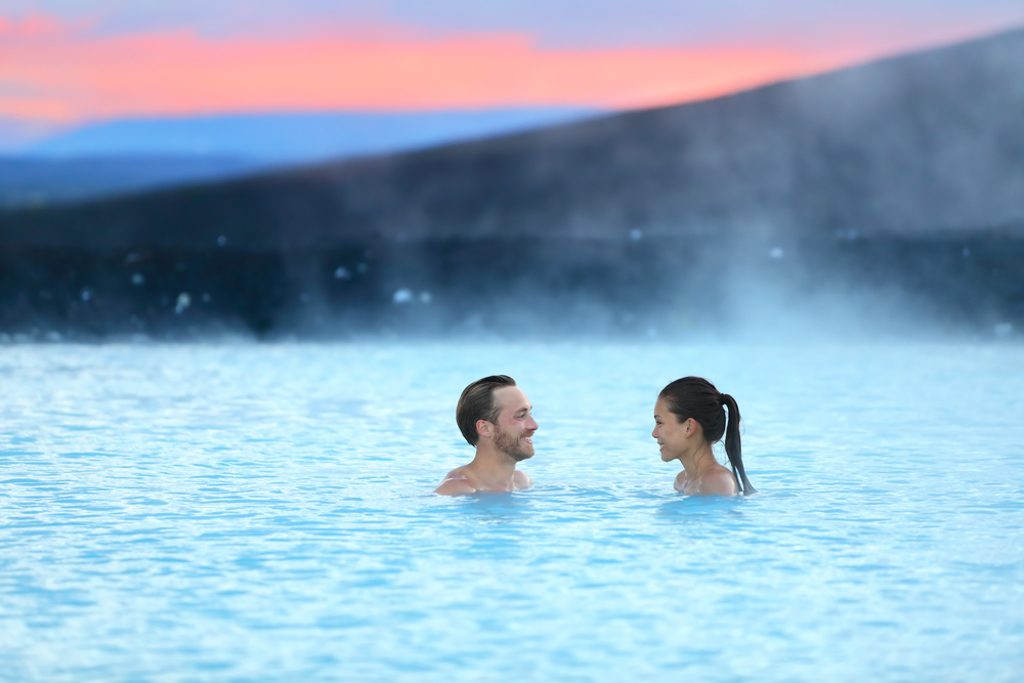
Water temperature affects us more like body temperature think like air temperature. Change the weather by a degree or two and we’ll hardly notice. But – just like with a fever – even a degree of difference in water temperature produces a discernibly different sensation. Body temperature water, interestingly, feels notably warm.
Know your own body- some of us have a low tolerance for heat, others for cold. Our tastes vary, even as our experience of temperature is universal.
A Variety of Experiences
Waters come from the earth in a wide range of temperatures. Often, they’re cooled or heated to the desired temperature, maintaining their mineral content and therapeutic qualities. Some thermal spas offer just one or two temperatures. Other spas have pools of varying temperatures, and going from pool to pool is integral to the experience. Plunge pools, in particular, can be thrilling- as we’ll see later on.
To choose the a spa, you need to know what temperatures actually feel like:
Thermal Spa Experiences
33° C/ 91.4° F
As thermal waters go, 33° C is almost refreshing. This is just warm enough for relaxing without getting a chill, and wonderfully warm for swimming and exercise. The thermal pool Terme Redi, in Italy’s Terme di Montecatini, is 33° C. It’s recommended for the whole family, and indeed this is a kid-friendly temperature.
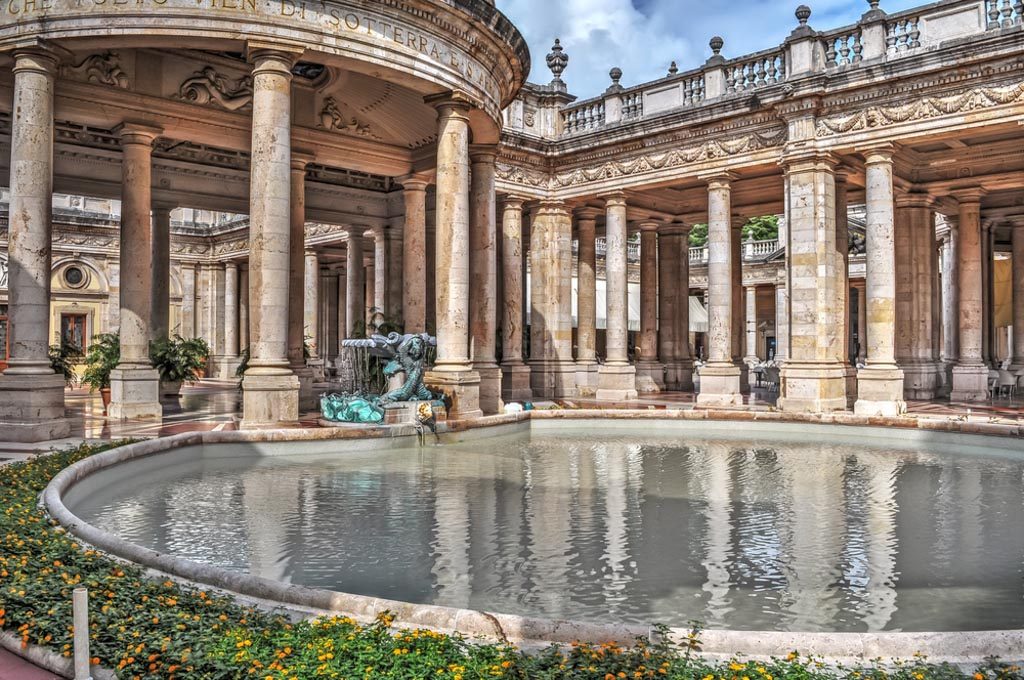 The main pool at Baden Baden’s Caracalla baths is 34° C, also ideal for swimming and relaxing both.
The main pool at Baden Baden’s Caracalla baths is 34° C, also ideal for swimming and relaxing both.
Outdoor swimming pools, like those at the famed Thermia Palace in Piešťany, Slovakia, are 32° C – 34° C – a wonderful temperature on cool day.
35° C/ 95° F
Since body temperature water actually reads as quite cozy and warm, two degrees below body temperature is pleasantly warm, in fact it feels almost neutral in temperature. It’s comfortable to remain still in the water without getting cold, and also very comfortable to move about without overheating. The main pool at the Gainsborough Bath Spa is this temperature, with an additional pool of 40°.

One of the two outdoor pools at Caracalla Therme in Baden Baden is also 35° C. Everything’s relative- on a cool winter night, it feel quite cozy.
Body Temperature: 37° C / 98.6° F
Not surprisingly, thermal waters that are the temperature of the human body are extremely comfortable. What is surprising is that body temperature waters feel quite warm. Even a degree cooler – 36° C – the temperature of one of the large pools at the Gellert in Budapest, for example – feels like a warm bath when you step in. 36° – 37° C is a temperature that continues to feel warm and comforting no matter how long you’re in the water. If you have a very low tolerance for heat, you may want a break after a time.
38° C/ 100.4° F
Even this one degree makes a perceptible difference. You can slip easily into the water without taking a moment to get used to it, but the warmth will gradually seep in. It’s notably relaxing.
39° C/ 102.2° F
At this temperature, the water starts to take some getting used to, and feels wonderful once you do. The legendary Jugendstil Mirror Pool at the Thermia Palace is 38° C – 39° C.
40° C/104° F
40° C is like a hot bath, and for me, is the most pleasurable, in measured doses. It takes a moment to get used to and is deeply relaxing. After about ten minutes, you may feel tired and need a break. Some may find it uncomfortable – as always, listen to your body.
42° C/ 107.6° C
You’ll occasionally find a bath as hot as this. Use with caution, in short doses.
Swimming Pools
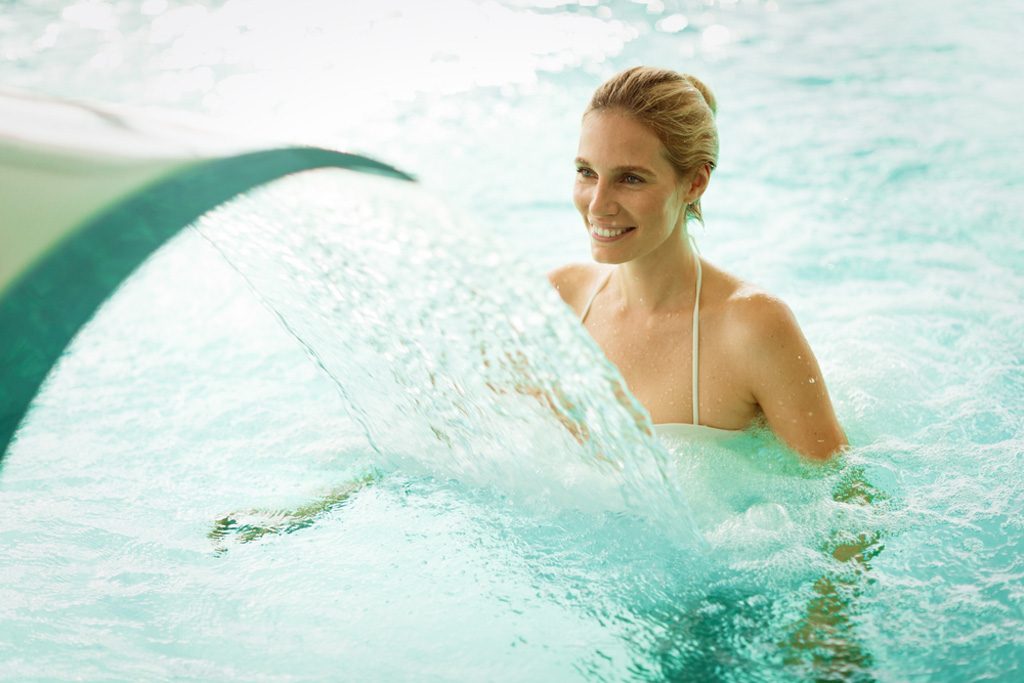
When waters are intended for swimming or vigorous exercise, they’re often cooler: 26° C – 28° C is common. The Gellert’s outdoor pool is 26° C, the indoor pool is 27° C, and the central swimming pool of the Friedrichsbad is 28° C. At these temperatures, you need to keep moving.
Plunge Pools
In some bathing cultures, changes in temperature are an essential part of the experience. This practice is as old as bath culture itself; Roman Baths had a Frigidarium (cold chamber), a Tepidarium (tepid chamber), and a Caldarium (hot chamber). In the sauna culture of Dachas in Russia, a session in the heat is ideally be followed by a roll in the fresh white snow.
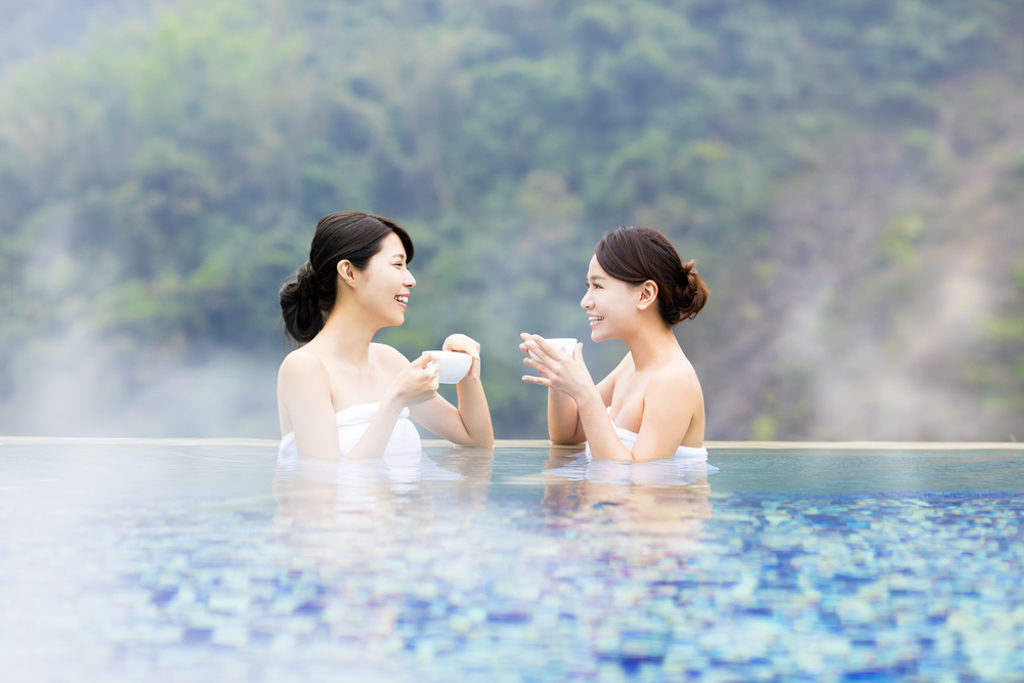
In the Japanese tradition of Onsen, immersing yourself in a pool of around 12° C follows a tranquil session in waters of 39° C. In Budapest, the principal grand baths all have pools in a variety of temperatures. There will – at least – be a central pool of 36° C – 37° C, a warmer pool of 40° C, and one or more plunge pools of varying temperatures – some with a temperature as high as 33° C, and some with ice literally floating in them.
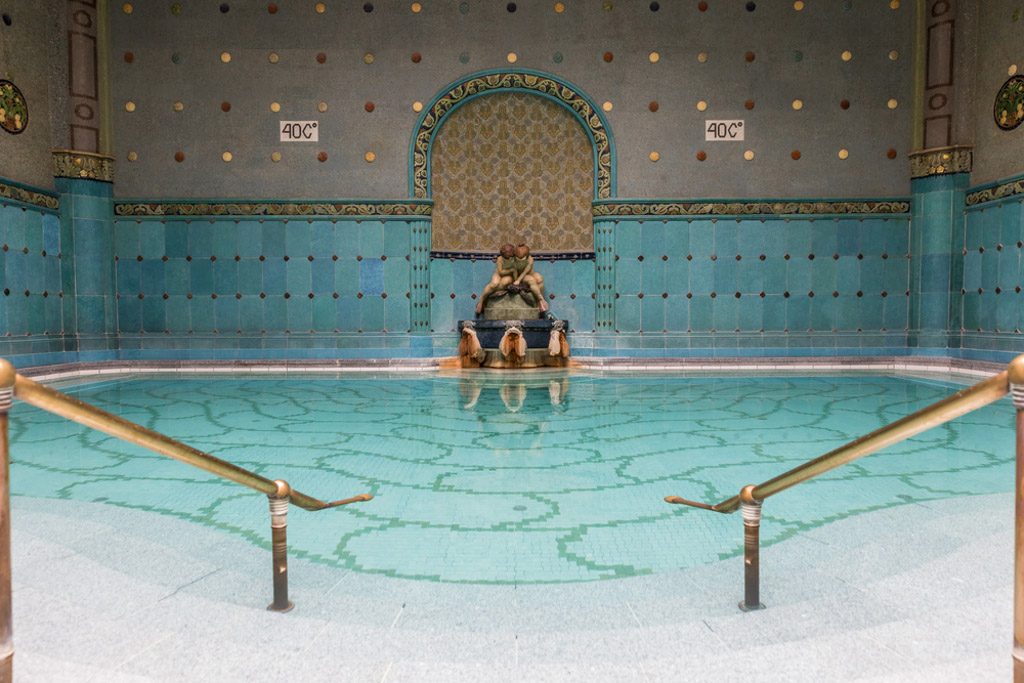
At the Király Baths in Budapest, the plunge pool is a deceptively tolerable 26° C. After the steam bath or warm pools, the temperature is quenching, like a tall cool glass of water. Linger, and let the cold catch up with you. At the Gellert, revive yourself in a small, deep 7° C pool. How cold is 7° C? Cold enough that if you hesitate on the stairs descending into the pool, your feet will be aching with pain by the time you gather the courage to dip the rest of yourself in. After braving this temperature, the heat in the 36° C pool seeps straight back into your bone marrow. It’s glorious.
After such deliciously coddling waters, plunge pools can seem like a small form of torture. They can be a little masochistic, but thrillingly so – a way flirting with the outer edges of physical sensation. They’re also an excellent way to enhance and prolong the pleasure of the bathing experience. Alternating warm with cool repeatedly fills you with vitality, so you leave the baths both deeply relaxed and invigorated.
Water temperature is one of the most important factors in choosing a thermal spa.

